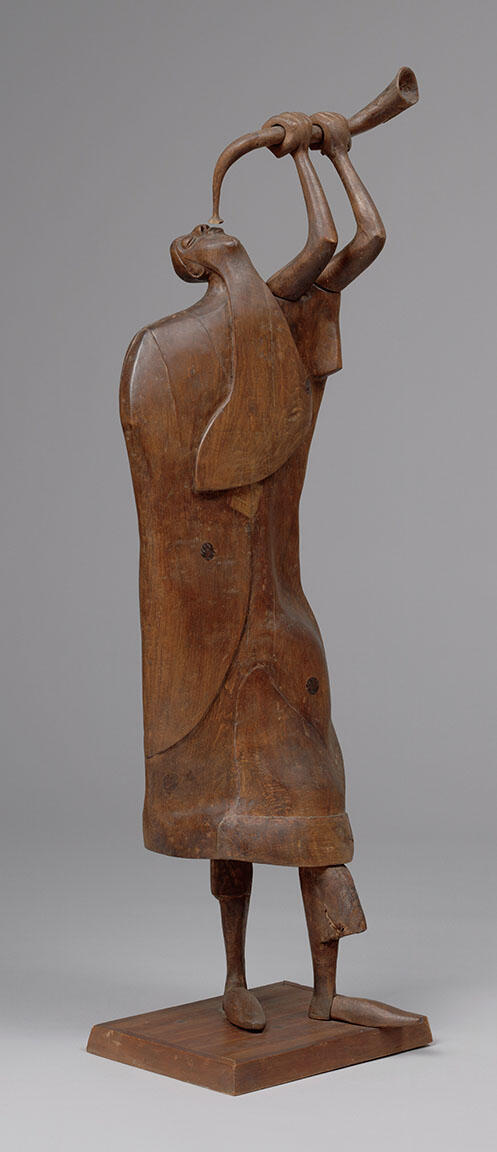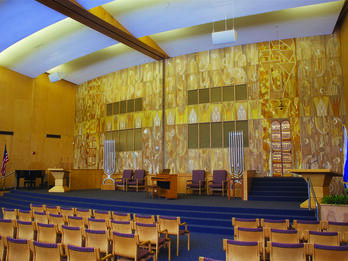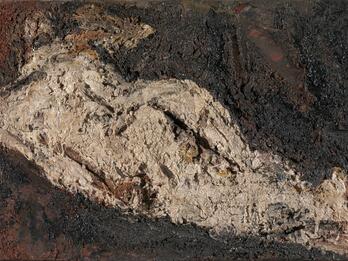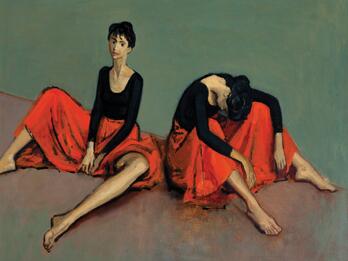Ritual Figure
Elbert Weinberg
1953

Places:
Related Guide
Visual and Material Culture in the Mid-Twentieth Century
Jewish visual art flourished and diversified in the postwar period, reflecting the social and political transformations taking place in the world.
Creator Bio
Elbert Weinberg
Connecticut-born sculptor Elbert Weinberg began studying art as a teen, attending night classes at the Harvard Art School and continuing his studies at the Rhode Island School of Design. He earned the prestigious Prix-de-Rome in 1951. Drawing early inspiration from mythological and biblical narratives and later turning to more modern themes, Weinberg worked primarily in wood and bronze. His career took off when a trustee of New York’s Museum of Modern Art bought one of his figurative sculptures; art dealer Grace Borgenicht then arranged a commission for Weinberg from the Hirshhorn Museum in Washington, D.C. More commissions followed, including for the Jewish Museum in New York and the Boston University School of Law.
You may also like

Temple Emanuel Sanctuary Wall (Grand Rapids, Michigan)

“Superduperman,” Mad #4

In the Ma‘abarah

E. O. W. Nude

Nahal Oz


